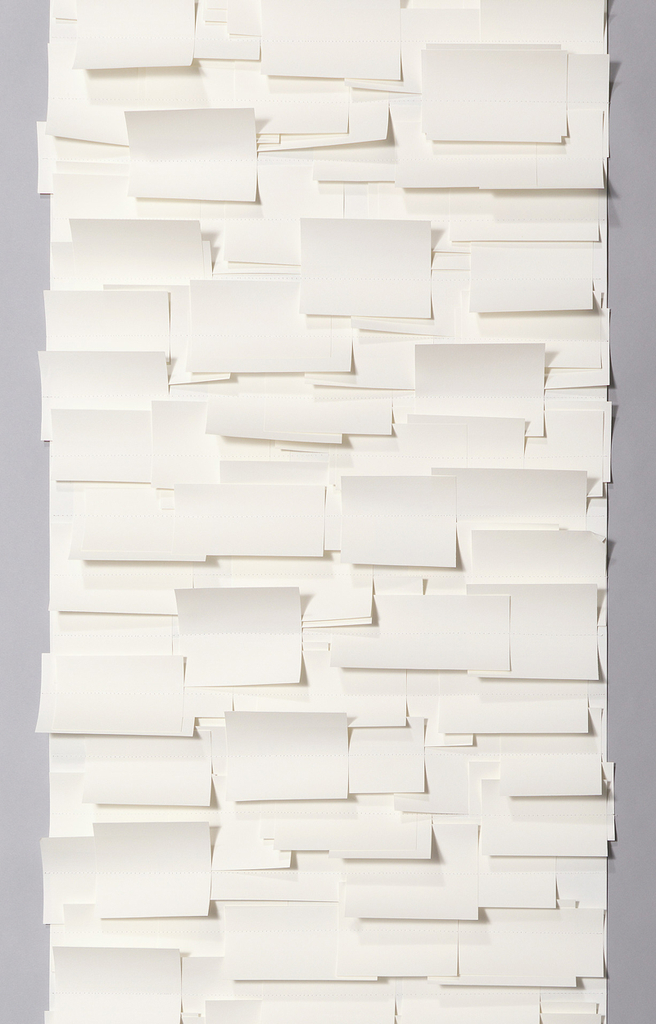Contemporary British designer, Tracy Kendall, challenges the notion that wallcoverings are solely represented in two dimensions. In the White Room, one of her many bespoke three-dimensional wallpapers, is composed of overlapping rectangular sheets of white paper, which are finely hand-stitched onto a white paper backing.
Despite the seemingly simple concept, I find this to be among Kendall’s most poetic designs. In the White Room is intentionally devoid of color in order to focus the eye on the textural quality of the design. The haphazard arrangement of overlapping sheets, which are cut to different sizes, results in some sheets curling more than others, enhancing the depth of the wallcovering. There is a linear visual consistency due to the regulated rows of stitches holding the sheets in place, but the open mosaic of curled sheets creates movement and invites a dramatic play of light and shadow.
I can only imagine sitting in a room covered with this wallpaper as it flutters in the breeze of an open window. The effect would be of the room itself moving, perhaps even breathing.

Detail of hand-stitched rows.
Kendall has a fine arts background, which is evident in her work and in her nontraditional approach to wallcoverings. She got her start in 1996, when she created wallpaper with singular, large-scale bold graphics. In 2002, Kendall introduced her bespoke three-dimensional papers, for which she clearly finds endless inspiration. These papers showcase myriad production techniques ranging from silk screening and laser cutting to additive techniques, by which everyday items, including buttons, paillettes, laser-cut letters, paper sheets, or zippers, are applied to a wallcovering by means of gluing, stitching, or even adhering plastic pin tags (such as those used for fastening price tags to clothing). In the White Room is among the best and most representative of her innovative, experimental approach, and expands the depth of the Museum’s collection of relief wallcoverings.

In the White Room used in an interior.
